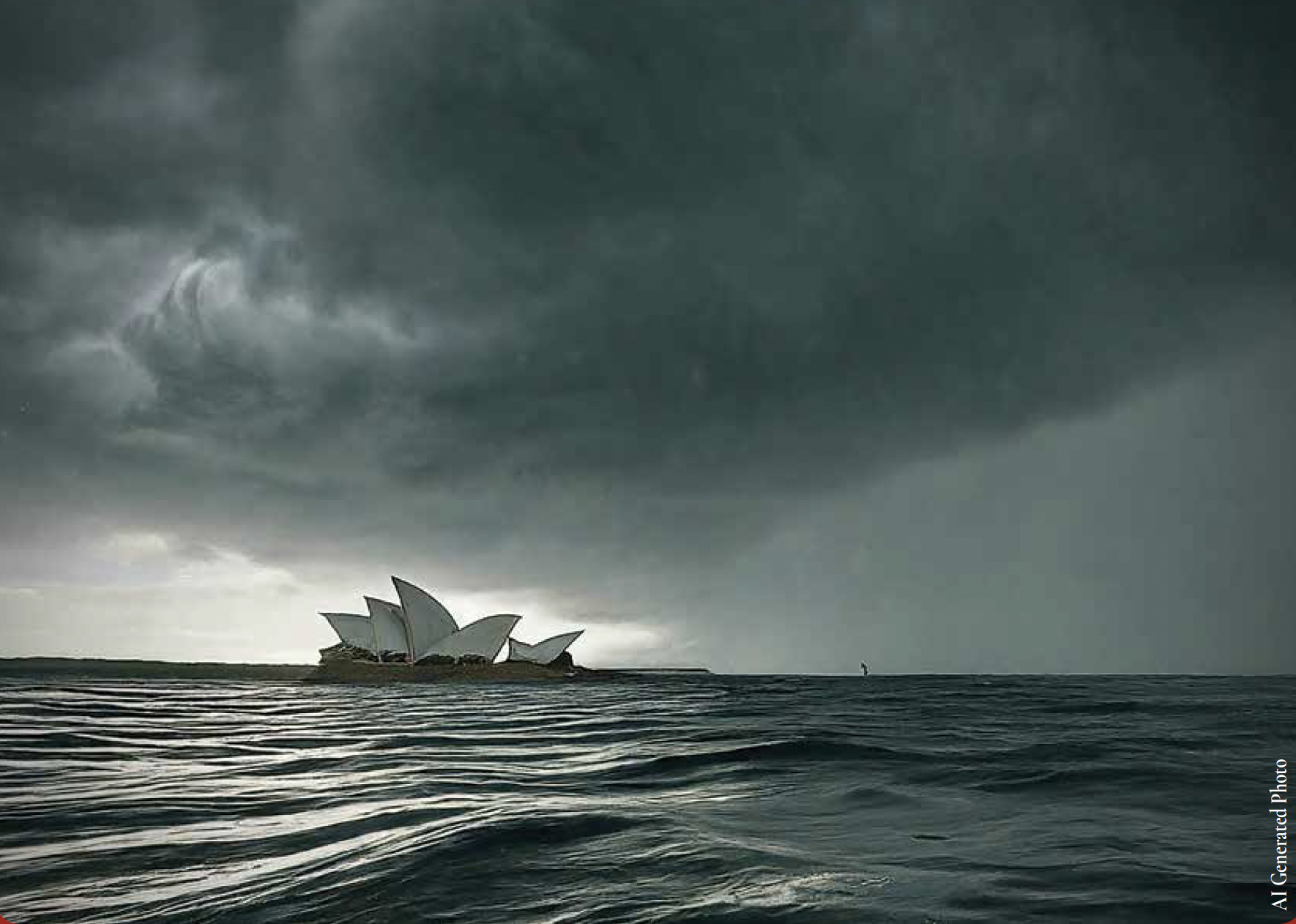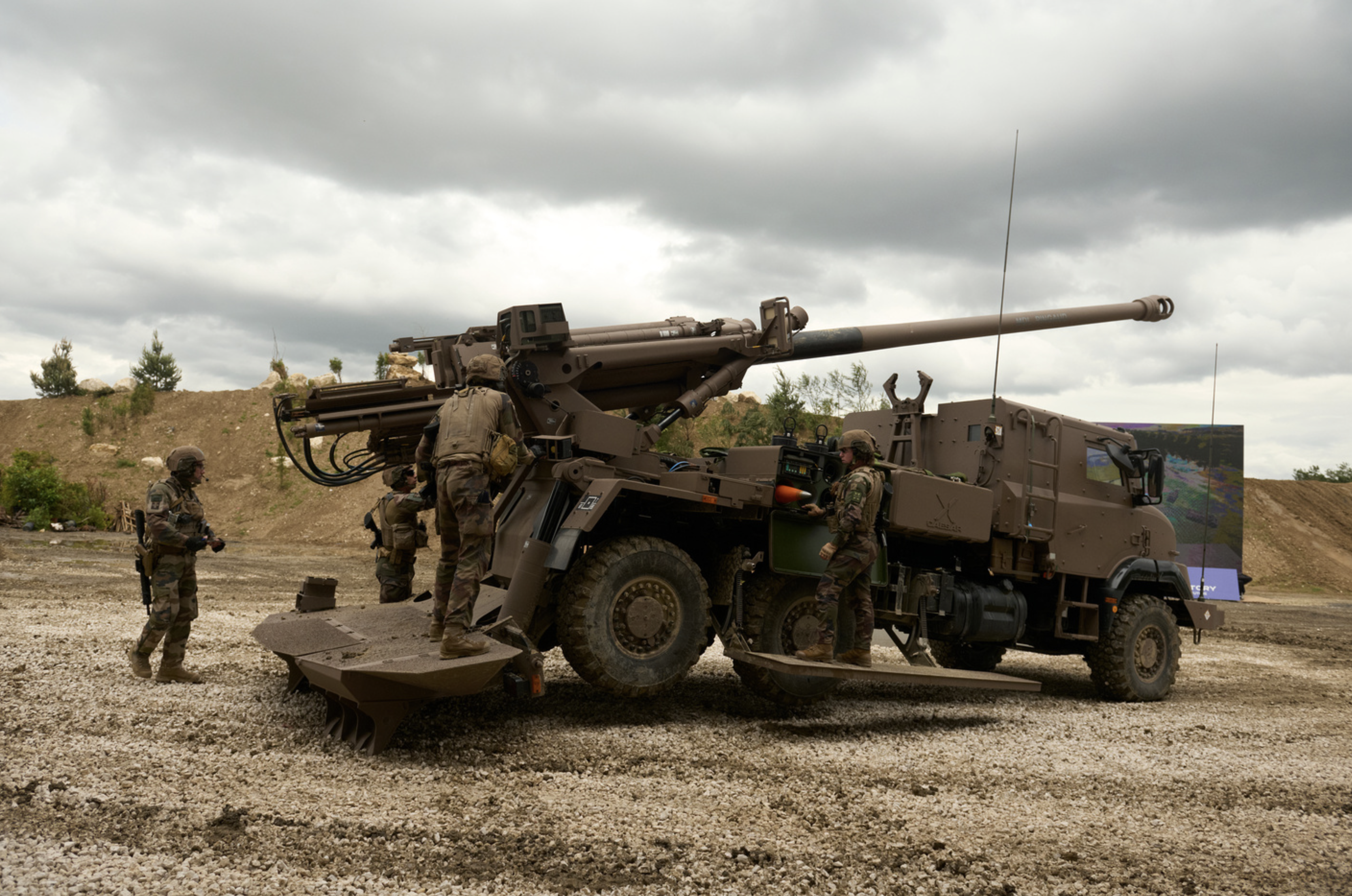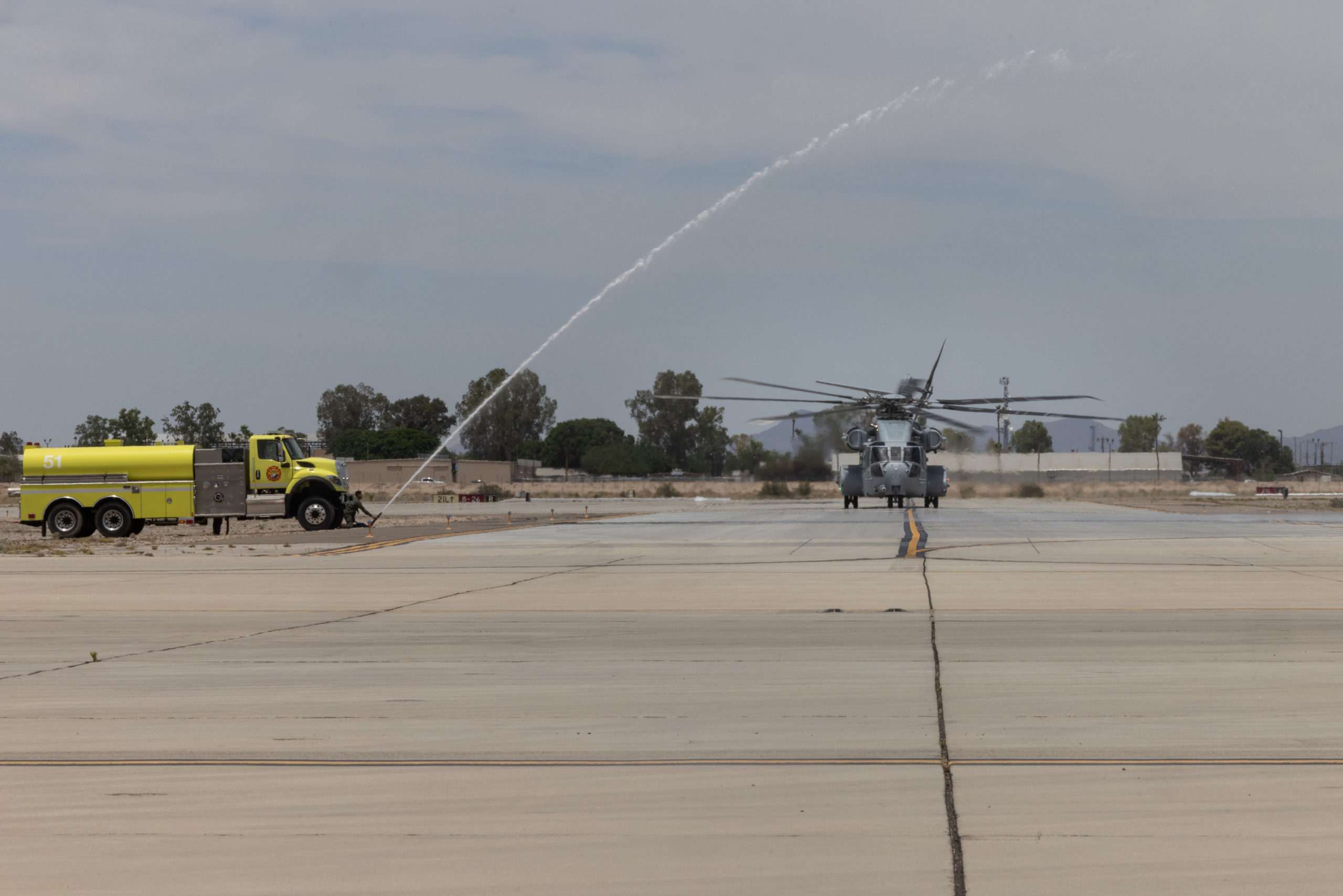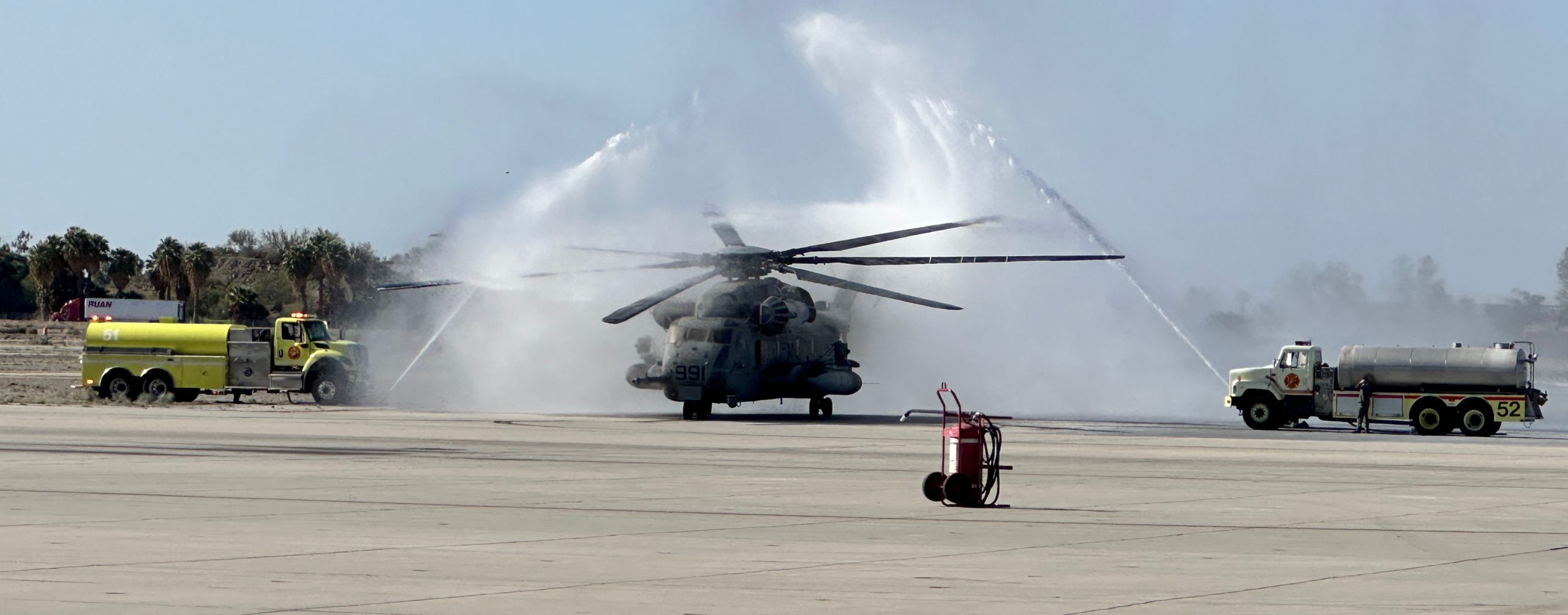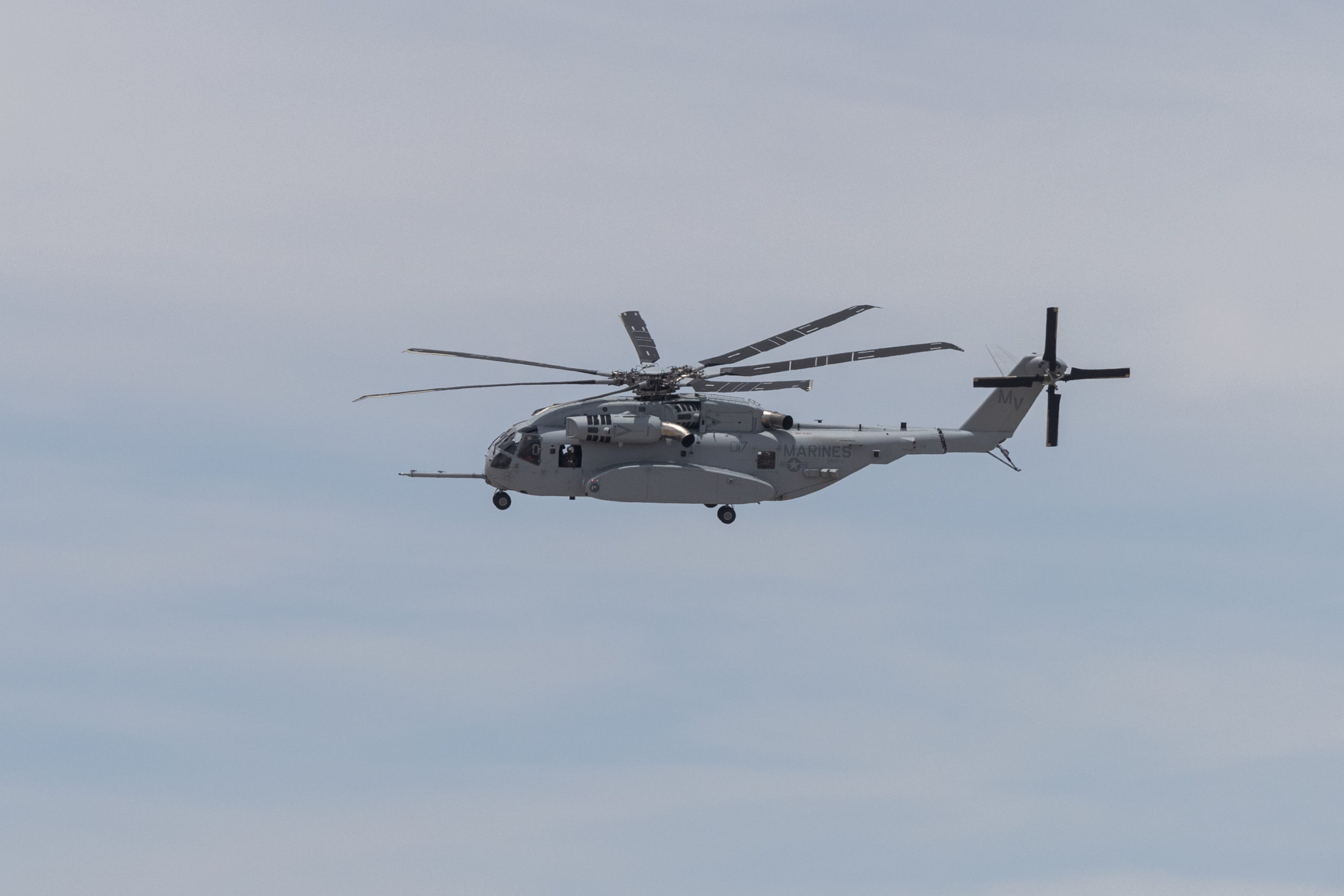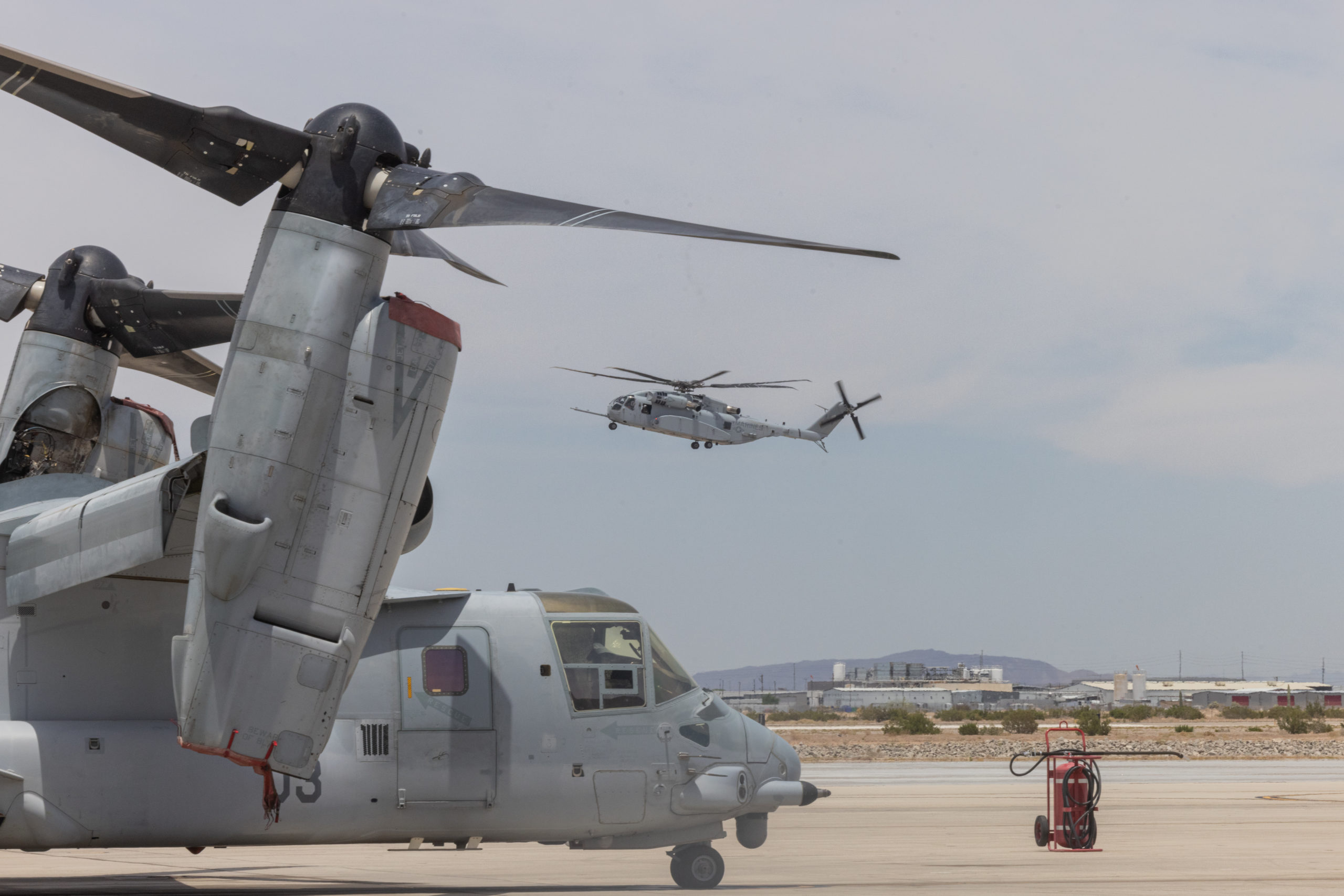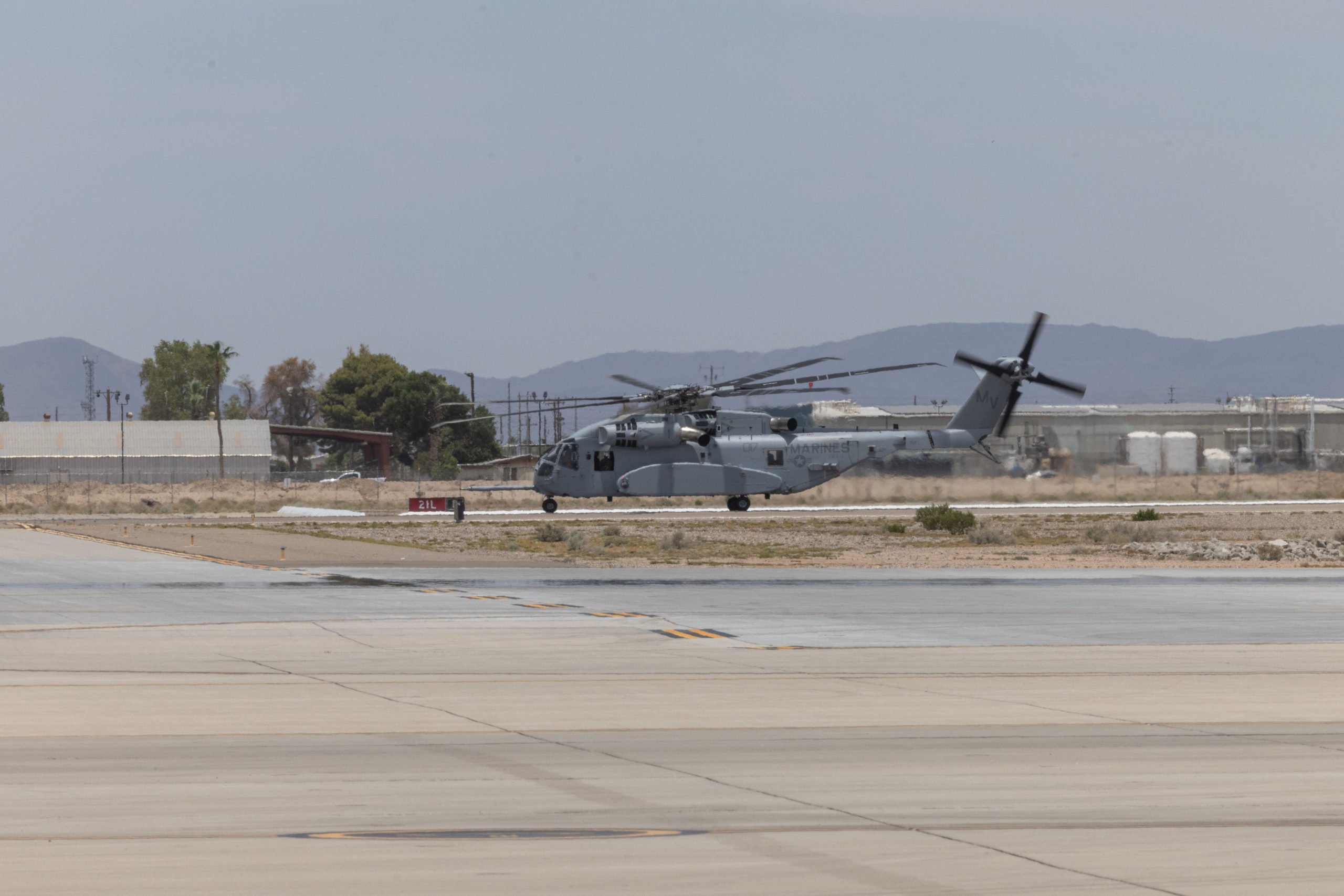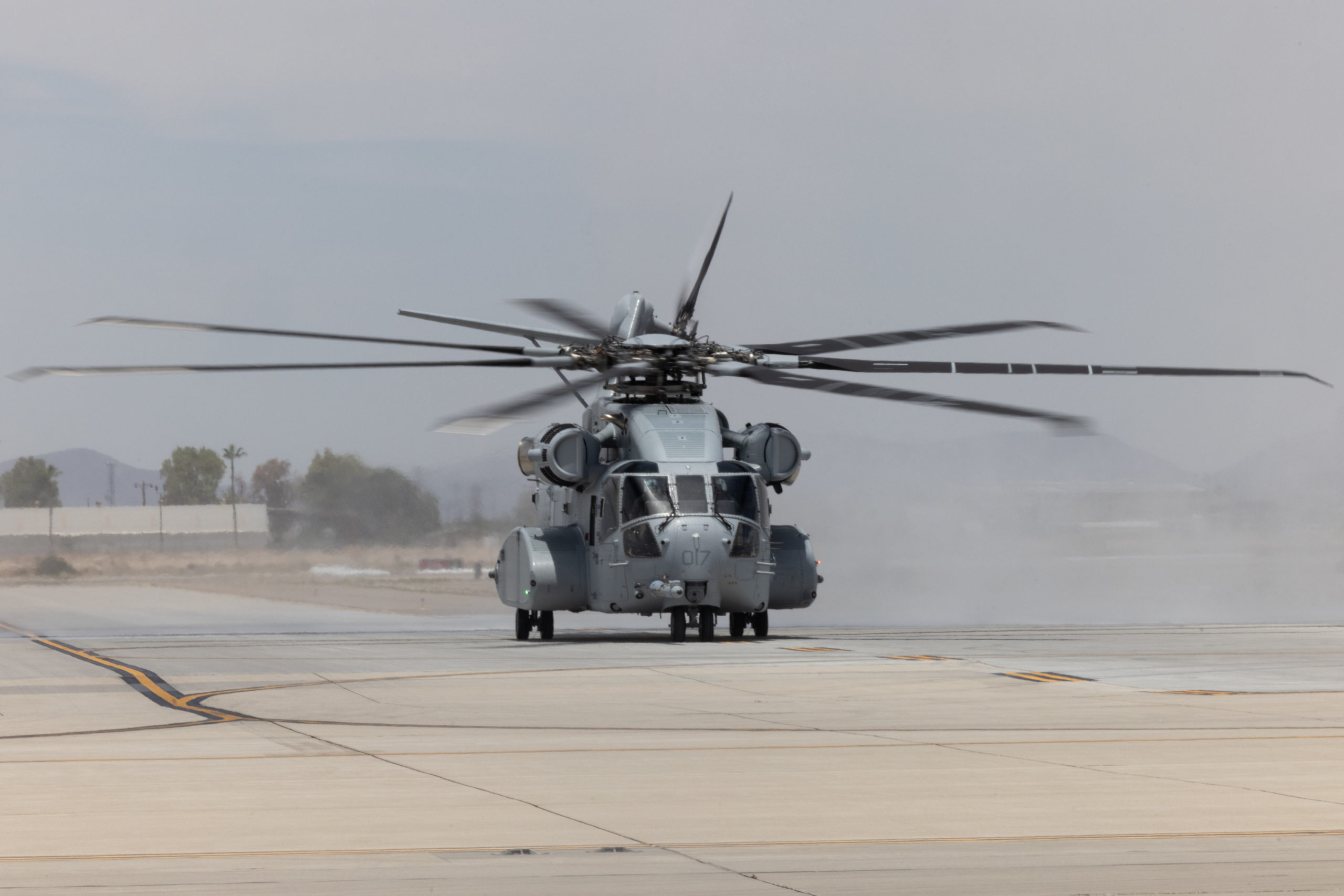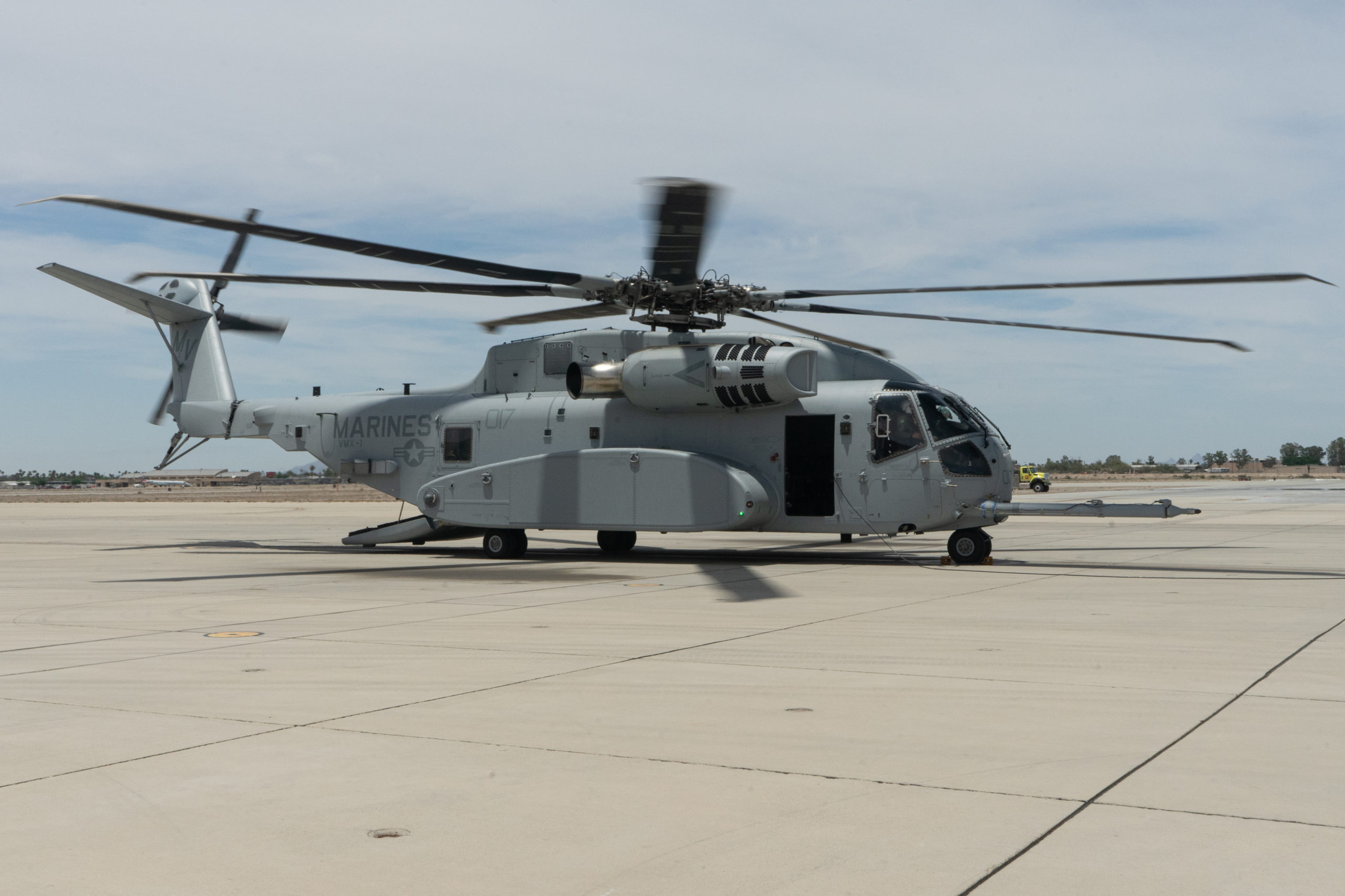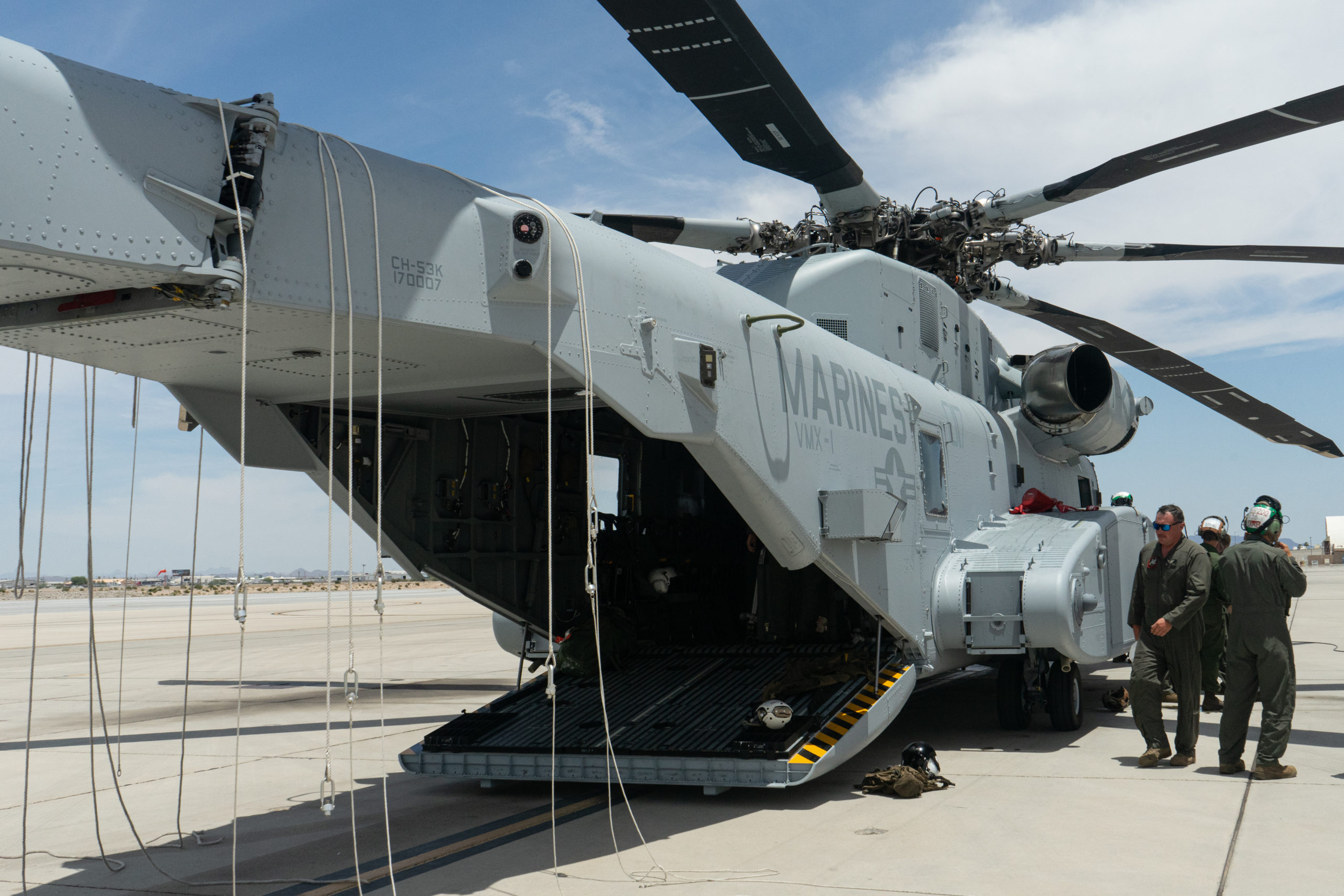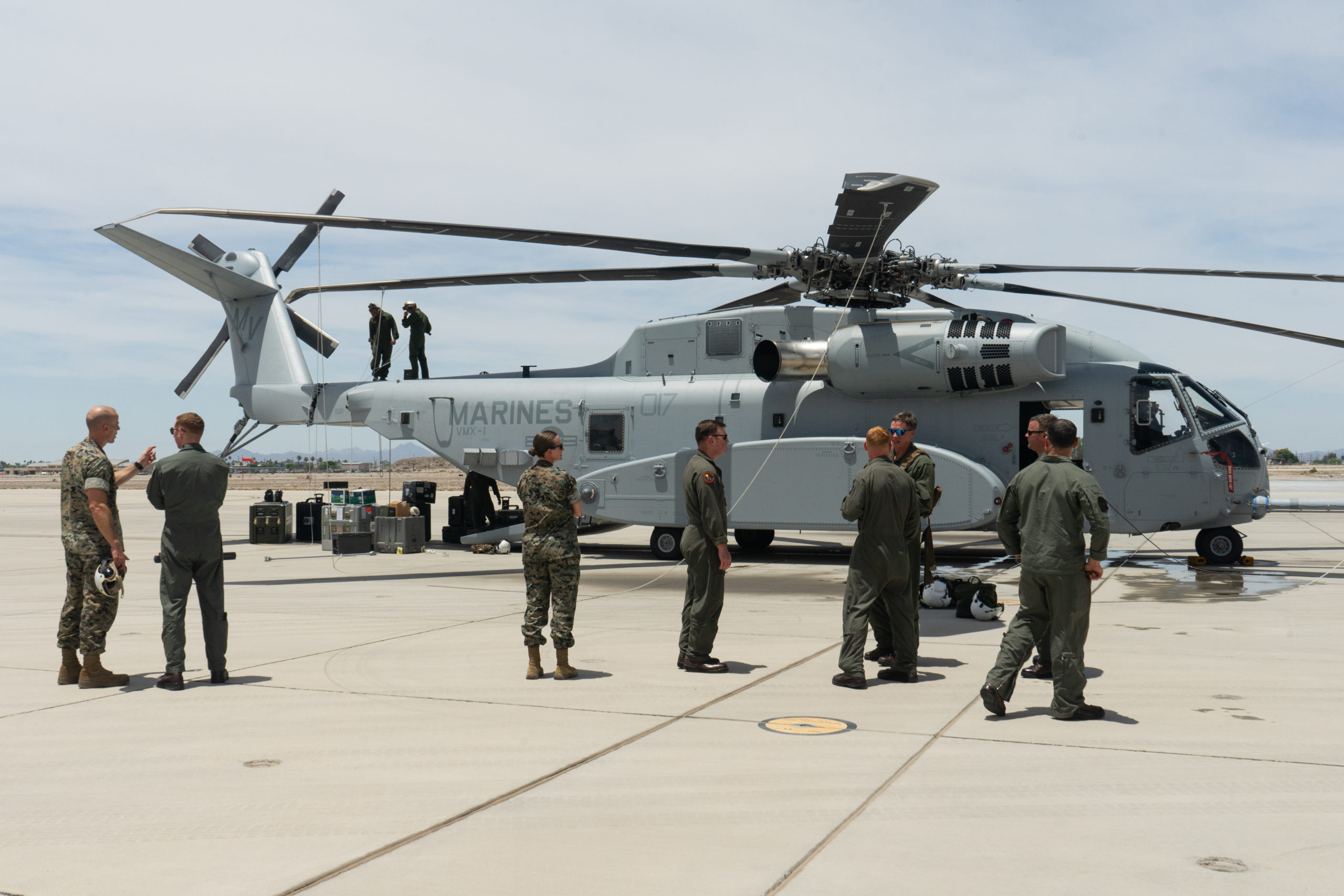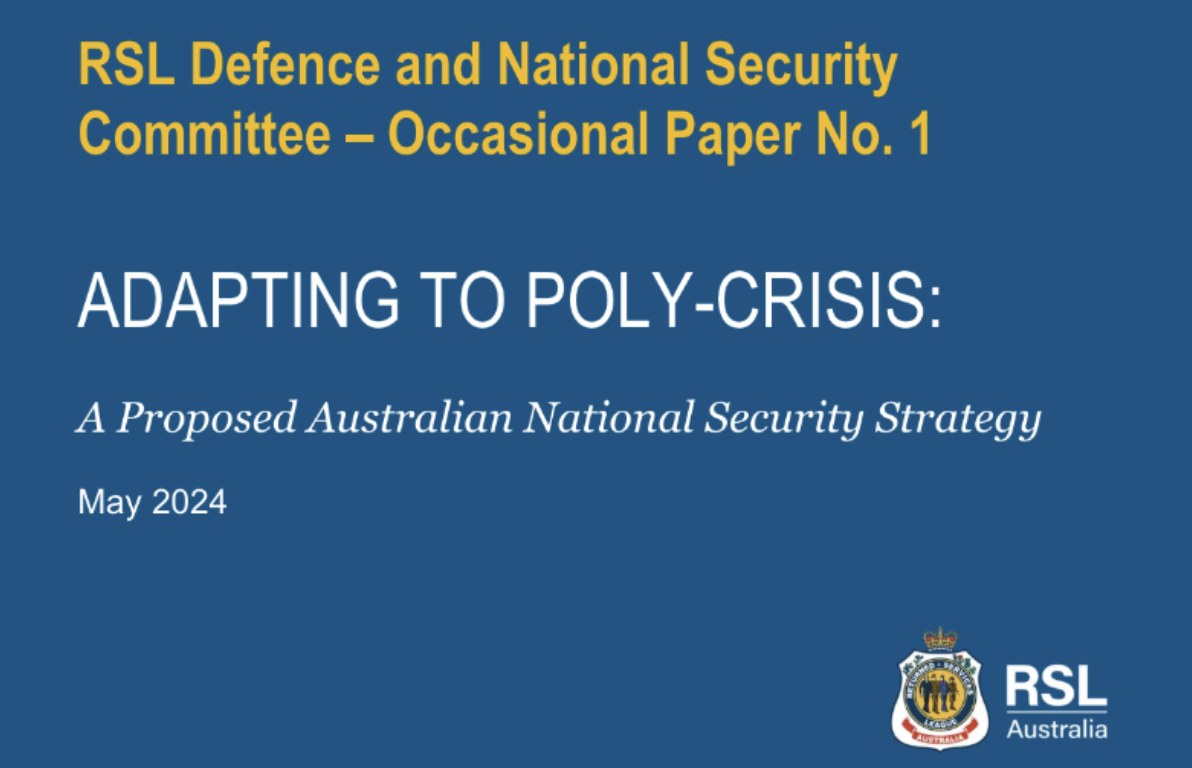By Air Vice-Marshal John Blackburn AO (Retd) and Group Captain Anne Borzycki (Retd)
Australia has a lengthy history of seeking protection from great and powerful western saviours due to a long-held fear of invasion from “the north.”
Stunned by the withdrawal of British Forces following the surrender of Singapore in WWII, it turned its attention to another large and powerful ally, the United States.
This dependence grew stronger following the UK’s withdrawal from ‘East of Suez,’ which was precipitated by the Suez Crisis in the late 1950s. The domino theory of the 1960s, which predicted the spread of communism in South-east Asia, fuelled Australian public concern and was used for political gain.
Australia relied on the United States as its security guarantor, initially through the 1951 ANZUS treaty. A treaty that, with the rupture of relations between the United States and New Zealand, no longer exists in full force but is still trumpeted by Australian politicians whenever it is judged beneficial.
The bilateral U.S.-Australia alliance is the most strategically significant relationship, despite the announcement of the AUKUS partnership in September 2023 which implied some degree of relevance for the UK in the region.
National security is based on capabilities, competence, and partnerships; complacency is a major hindrance to that security.
Is Australia, in fact, secure in 2024, or is Australia a complacent nation adrift in the South Pacific?
Politics, Geopolitics and the Defence of Australia – The 21st Century Context
On 14 September 2001, at a press conference at the Parliament House of Australia, Prime Minister John Howard invoked the Australia, New Zealand, and United States Security Treaty (ANZUS) for the first and only time, following the terrorist attacks on 11 September 2001 in the United States.1
John Howard had always been a conventional, if somewhat conservative, supporter of the Australian-U.S. alliance. Neither a champion nor a critic. That would all change after 9/11.
In 2006 Professor Emeritus Robert Manne wrote that “from this moment Howard worked conscientiously to create a new vision of the future: of an Australia deeply integrated – strategically, economically, socially and culturally – into the most formidable empire the world has ever seen … the U.S..”2
Possibly a slightly hyperbolic assessment in 2006, but one that ultimately became Australia’s reality.
Prime Minister Kevin Rudd’s Plan for Defence, released during the election campaign of 2007, noted that the Labor approach to Defence “… is built around three fundamental pillars – [first] Australia’s alliance with the United States … [which] is fundamental to our national security and our long-term strategic interests.”3
At the launch of the Defence White Paper (DWP 2009) on 2 May 2009, Kevin Rudd stressed that Australia’s alliance with the United States would remain the bedrock on which the country’s national security is built: “The document judges that the United States will remain the most powerful and influential military actor out to 2030.”4
The DWP 2009 announced the need to upgrade and enhance maritime capabilities as a consequence of an assessment of the changing strategic environment.
Specifically, “by the mid-2030s, we will have a heavier and more potent maritime force. In the case of the submarine force, the Government takes the view that our future strategic circumstances necessitate a substantially expanded submarine fleet of 12 boats in order to sustain a force at sea large enough in a crisis or conflict to be able to defend our approaches (including at considerable distance from Australia, if necessary), protect and support other ADF assets, and undertake certain strategic missions where the stealth and other operating characteristics of highly-capable advanced submarines would be crucial.”5
The phrase “to sustain a force at sea large enough in a crisis or conflict to be able to defend our approaches (including at great distance from Australia, if necessary” outlines a picture for the future submarine operating far from home, protecting our sea lanes and contributing to Asian regional security, and an unidentified threat, In 2009 Australia’s political leadership was hesitant and discreet in overtly naming ‘China’ as the target of defence planning and capability expansions.
Over the period in which the Australian Labor Party (ALP) was in government (2007 – 2013), despite the internal fractures of two leadership coups, the commitment of Australian Defence Force (ADF) personnel to both the Middle East and Afghanistan continued almost unquestioned. The relationship with the U.S. remained foundational, and indeed, deepened.
In 2011, then Prime Minister Julia Gillard and President Barack Obama, announced two new force posture initiatives that would significantly enhance defence cooperation between Australia and the United States.
The media release said that “Starting next year, Australia will welcome the deployment of U.S. Marines to Darwin and Northern Australia, for around six months at a time, where they will conduct exercises and training on a rotational basis with the Australian Defence Force … The intent in the coming years is to establish a rotational presence of up to a 2,500-person Marine Air Ground Task Force.”6
The leaders also agreed to closer cooperation between the Royal Australian Air Force and the U.S. Air Force that would result in increased rotations of U.S. aircraft through northern Australia.
The announcement prompted rapid, and at times, strident, criticism from the Chinese government. The New York Times noted that the deployment / basing of U.S. Marines in Australia “prompted a sharp response from Beijing, which accused Mr. Obama of escalating military tensions in the region …”7
In May 2013, just months before losing the federal election in September, the ALP released the Defence White Paper 2013.
This White Paper saw a significant shift in the language used in reference to China. From being regarded as a growing economic power in the region with whom meaningful dialogue and engagement was important, in conjunction with allies and friends, we now had a comforting paragraph reassuring Australians that there was no need to choose between the U.S. and China.
Australia’s national security and economic reality appeared to be well balanced between the strategic rivals with whom we were connected.8
When Labor lost power to the Liberal/National Party coalition in September 2013, Tony Abbott, the new Prime Minister, took over the submarine program with a few proposals of his own. Prime Minister Abbott became infamous for his ‘captain’s pick’ moments in which he made decisions without consultation with colleagues, advisers, experts or indeed, anyone.
Abbott became convinced that the Japanese Soryu-class submarine was precisely what Australia needed. Media reporting during 2014 widely reflected this position.9 Local shipbuilding businesses were angered at the probable loss of jobs and commercial opportunities.
In early 2014, the newly elected Abbot Liberal/National Party government actively sought to deepen economic ties with China through a free-trade agreement, at the same time as balancing strong criticism of Chinese actions in the East China Sea.10
Prime Minister Tony Abbott famously described the relationship with China at that time as one based on ‘fear and greed’.11 Fear of China’s growth, wealth and ambitions, but also greedy for the trade this growth enabled and the economic benefits that flowed to Australia. A variation of the ‘we don’t need to choose sides’ position of the previous ALP government.
By February 2015, following a series of internal party tensions and leadership threats and challenges, Prime Minister Abbott announced that a Competitive Evaluation Process would be undertaken as part of the Future Submarine acquisition strategy. This evaluation process involved France (DCNS), Germany (ThyssenKrupp Marine Systems—TKMS) and the Government of Japan as potential international design partners.12
In September 2015, Prime Minister Turnbull overthrew Tony Abbott, in yet another bitter internal party coup. The free-trade agreement, sought by Abbott, was finally signed in December 2015, and the praise was heaped upon President Xi by Australian politicians at a formal dinner to mark the occasion in the Great Hall at Parliament House Canberra.13
Not long after the signing of the Free Trade Agreement, the Government released Defence White Paper 2016 (DWP 2016) which acknowledged “The relationship between the United States and China is likely to be characterised by a mixture of cooperation and competition depending on where and how their interests intersect.”14
The DWP 2016 verified that the Future Submarine Program would be a rolling acquisition program.
On 26 April 2016 Prime Minister Malcolm Turnbull declared DCNS (now Naval Group) of France as the preferred international design partner for Australia’s future submarine. The successful design was the Shortfin Barracuda Block 1A conventional submarine, which was based on the French Barracuda nuclear powered submarine.
Australia had evidently not learned the lessons from prior defence acquisitions which involved taking a proven design by a foreign manufacturer, and then extensively changing it to meet perceived special Australian requirements.
On 30 September 2016 a contract worth between $450 and $500 million was signed between the Australian Government and Naval Group for the ‘design and mobilisation’ of Australia’s 12 Future Submarines. This included the development of Adelaide’s Osborne North submarine facility for this purpose.15
Regionally, the honeymoon period that followed the free trade agreement with China did not last long. Prime Minister Turnbull ignited the ire of the Chinese government in December 2017 when the federal government passed the Foreign Influence Transparency Scheme against the backdrop of a series of high-profile scandals involving CCP influence in Australian politics.
Though the law itself was not targeted at any one country in particular, Prime Minister Turnbull’s use of the politically-charged phrase “the Australian people stand up,” and his open criticism of CCP influence in Australian politics generated diplomatic blowback in Beijing.16
Then, in August 2018, Australia prohibited Chinese giants Huawei and ZTE from participating in building Australia’s 5G networks. A tit-for-tat escalation of trade actions/sanctions followed which only worsened after April 2020 when the new Prime Minister, Scott Morrison (who overthrew Malcolm Turnbull in yet another bitter internal party coup), endorsed an independent investigation into the origins of the COVID-19 pandemic, infuriating the Chinese officials.
The 2020 Defence Strategic Update (DSU) signed by both the Prime Minister and Minister for Defence, gave no hint of what was to come for the submarine project, just one year later.
The problems with the submarine project were a poorly kept secret around Canberra – within Defence and amongst successive Prime Ministers, Ministers, and industry. Indeed, there was minimal reference to the project in the DSU; merely a brief mention that the “Government will continue to deliver this nationally significant program of investment in ships and submarines…”17
And what was said about China?
Yet another step-change in the language used, for example: “While still unlikely, the prospect of high-intensity military conflict in the Indo-Pacific is less remote than at the time of the 2016 Defence White Paper, including high-intensity military conflict between the United States and China …”18
Then Prime Minister Morrison further worsened international relationships when, in September 2021, he announced the cancellation of the French submarine project after entering into a new, secretly negotiated, agreement with the United Kingdom and the United States.
With a single stroke Morrison aggrieved both China and France.
The French Foreign Minister Jean-Yves Le Drian called the trilateral submarine deal evidence of ‘duplicity’, ‘treachery’ and a ‘stab in the back.’ He also criticised Morrison’s lack of candour. France recalled its ambassadors to the United States and Australia.19 French President Emmanuel Macron said Prime Minister Morrison lied to him about his intentions with the deal, and that his trust in Australia had been deeply damaged.
This came a day after U.S. President Joe Biden expressed deep concerns about the handling of the secret plan to dump Naval Group from the future submarine project, labelling it as “clumsy” and “not done with a lot of grace”.20
Many Australians would have a similar opinion of Morrison’s honesty and clumsiness, especially after many of his activities as Prime Minister were made public following his defeat in the 2022 federal election. Of course, many Australians would also have vivid memories of France’s less-than-trustworthy actions in the Pacific region over previous decades.21
The Emergence of AUKUS
AUKUS, the trilateral security partnership for the Indo-Pacific region between Australia, the United Kingdom (UK), and the United States (U.S.) was announced on 15 September 2021.
The decision by then Prime Minister Morrison, was a complete surprise to the Australian people. In the March 2023 Australia in the World podcast, the late Alan Gyngell, former Director-General of the Office of National Assessments, a leading Australian foreign policy adviser and academic, was quoted as saying that “the most surprising thing about this announcement of the largest project ever undertaken by the Commonwealth of Australia remains the fact that there has been no formal articulation of the reasons for the decision. No report, no speech to parliament, no speech at all, other than the sales patter from successive governments: ‘China is more assertive, the rules-¬based order is under threat, nuclear submarines are just what Australia needs.”22
It’s as if AUKUS, once proclaimed by the Liberal Prime Minister, became sacrosanct, with the then-opposition leader, now Labor Prime Minister, Albanese agreeing to the collaboration in just hours. There has been no political debate on this critical matter for Australia’s security.
Now, it appears to be nearly treasonous to question the decision’s merits; citizens debating the subject were effectively mocked by the Chief of Navy, Vice Admiral Hammond, who urged Australians to ignore ‘hand-wringing’ doubters of the AUKUS pact.23
Have political talking points spread to the highest levels of the Australian Defence Force (ADF)?
Whilst the ‘U.S.’ part of AUKUS could be seen as a logical fit, the value of the ‘UK’ part was more difficult to justify. Assuming that AUKUS planning was already underway, and was a little over a year from being announced, what did the 2020 Strategic Update say about Australia’s relationship with the United Kingdom?
In the 68-page document there was not one mention of the United Kingdom. Yet by September 2021, Prime Minister Morrison was quoted as describing AUKUS as a “forever partnership for a new time between the oldest and most trusted of friends.”24
Recently, the Australian Defence Minister that the “UK has a much greater presence in the Indo-Pacific than we have seen in a very long time”.25
But apparently this is news in Britain. The UK Parliament’s UK Defence and the Indo-Pacific – Report Summary, dated 24 October 2023, stated: “Although we welcome the progress made in the region, we reject the notion that the ‘tilt’ has been ‘achieved’ from a Defence perspective.
“With only a modest presence compared to allies, little to no fighting force in the region, and little by way of regular activity, UK Defence’s tilt to the Indo-Pacific is far from being achieved. If we aspire to play any significant role in the Indo-Pacific this would need a major commitment of cash, equipment and personnel, or potentially rebalancing existing resources. The UK Government’s future strategy for the Indo-Pacific is still unclear.”26
So much for a “forever partnership” with the UK in the region.
Political commentators, national security experts, academics and the media in general were still trying to come to terms with what AUKUS practically meant for Australia when, in April 2022, Prime Minister Morrison announced that a federal election would take place in May 2022.
The Liberal/National Party coalition had styled themselves as the bastions of security and the ‘liberal’ ALP were frequently derided as ‘soft.’ In the period leading up to the election, the ALP had little political wiggle-room to change stance on AUKUS or risk the usual ‘soft on security’ barbs being levelled at them.
At the end of the day, after nearly a decade of ‘conservative’ government, the Liberal/National Party was defeated, and the ALP was returned to government in May 2022 – with AUKUS steadfastly a part of their policy platform as well.
To emphasise this reluctance to ‘rock-the-boat’ so to say, the Australian public policy journal, Pearls and Irritations, observed: “It is understandable that the leadership team heading towards an election was determined not to be wedged on defence policy … [but] why would an intelligent forward-looking government fail to fully assess the implications of secret international negotiations made by an unreliable former prime minister in the dying days of a discredited government?
“Why is our apparently very capable leadership team so timid about questioning the terms and range of preconditions for the AUKUS agreement?”27
AUKUS firmly intact, the new Labor government, under the leadership of Prime Minister Albanese, made immediate attempts to repair / renew the relationship with China – primarily as it related to trade.
There was an urgent political and economic need to get the export market back on track. And there were early breakthroughs in late 2022 as both the Foreign and Trade Ministers were able to meet with Chinese government officials to discuss avenues for lifting sanctions / tariffs and reopening channels of communication.28
Just one month after the election and during his visit to India, the Defence Minister/Deputy Prime Minister said in an interview with Australia’s ABC: “… for India and Australia, China is our largest trading partner. For India and Australia, China is our biggest security anxiety. We’re both trying to reconcile those things, which is not an easy problem to solve.”29
Australia’s perennial paradox, and a juggling act that is only getting more challenging. Australia’s defence policy at a macro level rarely moves too dramatically from one government to the next, nonetheless, within the first 100 days of office, the Albanese government commissioned the independent Defence Strategic Review (DSR) 2023.
Within the body of the DSR, the language regarding China assumes a more ardent tone: “Intense China-United States competition is the defining feature of our region and our time. Major power competition in our region has the potential to threaten our interests, including the potential for conflict … China’s military build-up is now the largest and most ambitious of any country since the end of the Second World War …
“This build-up is occurring without transparency or reassurance to the Indo-Pacific region of China’s strategic intent …China’s assertion of sovereignty over the South China Sea threatens the global rules-based order in the Indo-Pacific in a way that adversely impacts Australia’s national interests. China is also engaged in strategic competition in Australia’s near neighbourhood.”30
The relationship with China is a genuinely baffling example of cognitive dissonance. According to the Department of Foreign Affairs and Trade, China is Australia’s largest two-way trading partner, accounting for 26 per cent of our goods and services trade with the world in Financial Year 2022-23.31 Yet China remains the significant factor in Australia’s defence planning, and posturing.
In the years since John Howard committed Australia to the United States, the relationship has been turbocharged to the point where the ‘dependency’ (rather than interdependence) could impact Australia’s independence and sovereignty.
The DSR 2023 reflects this turbocharging: “Our Alliance with the United States will remain central to Australia’s security and strategy. The United States will become even more important in the coming decades. Defence should pursue greater advanced scientific, technological, and industrial cooperation in the Alliance, as well as increased United States rotational force posture in Australia, including with submarines. Contrary to some public analysis, our Alliance with the United States is becoming even more important to Australia.”32
There is an expression that was coined during the Cold War, by then-Prime Minister Menzies, to define what was virtually a canonical faith in Australia’s international outlook – that Britain and the U.S. formed a protective umbrella for the country in a threatening Asia.33
The ‘great and powerful friends’ would be the protectors. From Federation until World War 2 it was the UK, and since then, the U.S.
And while solid, reliable alliances are fundamental to global and regional stability, at what point does an ‘alliance’ become an ‘addiction’, an unhealthy dependency?
Has this historic reliance weakened Australia?
Has it given rise to complacency?
Has it stifled creativity and innovation?
Has it denied the nation a shared narrative?
Has it created a gilded cage from which there is no escape?
With AUKUS, Australia has become a loyal partner to two empires – one in an apparent political civil war and the other of little relevance to the Asia Pacific region, according to its own Parliament, as discussed previously.
Indeed, the partnership may, in the end, constrain sovereign thinking, capability and sovereignty given the degree of compliance required with U.S. International Traffic of Arms Regulations and the Australian Governments inventive definition of ‘sovereign’ in the Defence Industry Policy.
The Policy defines foreign primes that have operations in Australia as ‘Australian’ and as ‘sovereign’ as actual Australian companies, which have majority Australian ownership and controls and headquarters in Australia.34
The Current Approach
On 24 April 2023 the Australian Labor Government released the Defence Strategic Review (DSR), which examined whether Australia possessed the required defence capabilities, posture, and preparation to best defend itself and its interests in the current strategic environment.
The DSR concluded that the ADF was “not fully fit for purpose” in the face of escalating security challenges. This occurred despite an investment of around A$695 billion in defence from 2007 to 2022 by both the Labor and Liberal Coalition governments.
How could this have occurred? What does the present Labor government plan to do about it?
The DSR stated that “Australia’s strategic circumstances and the risks we face are now radically different – the U.S. is no longer the unipolar leader of the Indo-Pacific. Major power competition in the region has the potential to threaten our interests, including the potential for conflict. China’s military build-up is now the largest and most ambitious of any country since the end of WW2 … This necessitates a managed, but nevertheless focused, sense of urgency. It is clear that a business-as-usual approach is not appropriate.”35
However, Australia’s strategic situation is more complex than depicted in the DSR. Australians are currently dealing with concurrent, and in some cases existential, concerns.
These include climate change and the urgent need to reduce emissions, rising global and regional security risks, a global pandemic with long-term societal and economic consequences, a global energy transformation in which we lag behind the developed world, and a global market model that has resulted in reduced resilience due to a lowest price, just-in-time philosophy.
Increased levels of internal instability, societal unrest, and a lack of trust in government and institutions among our AUKUS partners raise concerns about the possibility of similar tendencies occurring in Australia.
In 2021, our Institute of Integrated Economic Research – Australia produced a report on Australia’s national resilience titled Australia – A Complacent Nation … Our reactions are too little, too late, and too short-sighted.36
It highlighted Australia’s lack of resilience in the face of current emerging threats and risks. Little progress has been made in the intervening three years.
Whilst the DSR did identify that a central component of deterrence for national defence is resilience, listing 12 examples of critical resilience requirements, there is no indication of how Government intends to address them; listing them is not acting.
In each case there needs to be a risk assessment before a strategy and plan can be developed. For example, given national concerns regarding the state of our energy systems and massive import dependencies, it is sobering to realise that the last time Australia had a National Energy Security Assessment, was in 2011. There appears to be no coherent plan.
The DSR was a largely bottom-up, platform-focussed review and plan, delivered incrementally over a period of 10 months, following its initial announcement, and devoid of any National Security Strategy or Defence Strategy to provide context and guidance. A Defence Strategy was delivered in April 2024, but there is still no elusive National Security Strategy.
It is also difficult to discern how the DSR has taken account of the numerous failures to implement previous reviews, as well as what lessons were learned from the actions that were only partially implemented.
The Government has stated that “Realising the ambition of the Review will require a whole-of-government effort, coupled with significant financial commitment and major reform.”37
Despite the aspirational phrasing and free use of the terms “soon” and “sooner” in numerous political statements, there is no significant new financing for DSR implementation this decade.
The Australian Defence Department has often struggled to manage complicated change programmes, but now they are expected to succeed with this large and under-resourced reform programme. Reorganisations, reallocation of resources and cancellation / changes in projects are assumed to be all that is necessary in the near term.
The failure to resource the DSR adequately could mean that our deployable military operational capability will be less at the end of this decade than it is today and this right when the threat envisaged by the review could appear.
Since 2000 there have been six Chiefs of Defence who have been directed by 13 Defence Ministers (two of whom only served 271 and 272 days respectively), 13 Assistant Ministers, and 12 Ministers for Defence Industry, Defence Materiel, and Defence Personnel. A parade of 38 Defence related Ministers over 23-years, each with a party-political agenda, and often with little real understanding of National Security or Defence.
This august group tasked a total nine Defence related White Papers, and nine Defence reform, restructure, review, and transformation programs. Were any lessons learned during this 24-year journey? Apparently very little, given the findings of the 2023 DSR.
The Submarine Saga
In 2009 the Australian Government announced that by the mid-2030s, we would have a heavier and more potent maritime force. Our future strategic circumstances necessitated a substantially expanded submarine fleet of 12 boats in order to sustain a force at sea large enough in a crisis or conflict.
Over the intervening 15 years, successive Governments have identified Japanese, then French and finally a mixed fleet of used U.S. submarines, and a yet to be designed UK submarine type with delivery of the latter to occur in the 2040s.
This, a decade after they are needed according to DWP 2009, and a decade after the heightened threat of conflict in the region could materialise, according to the DSR 2023.
Of particular interest, given growing public scepticism regarding the actual feasibility of the AUKUS submarine plans, is the view of the current opposition leader, Peter Dutton, who was the Defence Minister at the time of the AUKUS announcement in 2021.
In March 2023, Dutton warned against acquiring a future submarine fleet from the UK, stating that advice he received as defence minister before the last election was that the British companies involved in the UK’s submarine production had no extra capacity to support an Australian program and insisting that American Virginia-class submarines remained the best and most practical option for Australia.38
A pity it took him 18 months to speak up but that’s politics.
This incredible US/UK hybrid submarine fleet package is thoroughly examined in Professor Hugh White’s superb essay “Dead in the Water,” which was published in the Australian Foreign Affairs Journal in February 2024.39
He explains the decision’s assumptions, the significant likelihood that the plan will be disrupted, and how deploying the proposed nuclear submarines in the future will have little or no impact the military balance in Asia or on Australia’s security.
He discussed the capacity differences between conventional and nuclear-powered submarines, stating that while a nuclear-powered submarine may be equivalent to two conventional boats, it costs five times as much.
Professor White summed up the AUKUS deal as follows: “AUKUS also gave Morrison a high-profile defence initiative which provided a national security focus for the 2022 election campaign, and presented a chance to wedge Labor if they opposed it. Labor dodged that bullet by fully supporting AUKUS, partly from a pathological fear of a political brawl with the Coalition on any national security issue, but also because many of the party’s leaders believe as fervently in supporting America against China as the Coalition does.
“It is a bipartisanship built upon political opportunism and strategic complacency on both sides … the sheer scale of AUKUS puts it in a class of its own as an exemplar of bureaucratic incompetence.”40
We will leave the technical and capability arguments to Professor White and others. But one point which we will highlight, based on our military experience over many decades, is that the transition complexity for completing a life-of-type-extension on the existing Collins Class boats whilst managing the introduction of around three used U.S. Virginia Class nuclear boats (with their reported maintenance / availability issues) whilst continuing to manage a problematical surface fleet ship construction program and concurrently introducing a yet to be designed UK Nuclear Boat by a Navy that is already 6% below authorised staff levels and is experiencing recruiting difficulties is a recipe for disaster.41
Given Australia’s Defence procurement history, the possibility of this occurring on schedule and on budget is close to zero. However, this will surely provide excellent lessons to be ignored in a future Defence review!
The Impact of The Australian Political System on National Security
Given our previous assessment of the Australian political system’s impact on defence, we will now look at the impact on national security, a much bigger canvas for politicians to muddy.
Our first concern is that the analysis of our national security continues to be conducted through a somewhat narrow military platform lens.
For example, the commitment to what appears to a 25-year plus program to acquire two different types of nuclear submarines from two separate nations, for a cost in the order of $350B is being justified with little opportunity for the Australian people to understand why the decision was taken.
This is particularly problematic considering that Australia lacks a national risk assessment, a national security strategy, and a national defence strategy. The latter, however, was delivered in early 2024, three years after the AUKUS decision was announced.
All of this has transpired in a highly complicated security context, with uncertainty in global economic systems already generating palpitations in many countries. This is the result of a broken political system over the preceding decades, which repeatedly fails to learn from previous mistakes and failures.
This situation has been described by former Liberal Party opposition leader John Hewson as follows: “Voters are also increasingly tired of the adversarial nature of the contest between Liberal and Labor – pointless short-term point scoring unrelated to either the national interest or to addressing important issues. The main parties are too often focused on a power game played among themselves, saying, or doing whatever they believe is necessary to win, where the endgame has little to do with listening to voter concerns or providing better government.”42
Our second concern is the oft venerated ANZUS Treaty; the negotiation of ANZUS in 1951 was the first instance of Australia forming a political alliance without the involvement of Britain, causing some tension with ‘the motherland’.
Australia’s commitment to U.S.-led causes such as the Vietnam War, while not formalised under ANZUS, have been linked to the treaty. Many political commentators suggested that Australia’s strong involvement in Vietnam was a means of proving our usefulness to the alliance, demonstrating Australian loyalty should we need U.S. support in the future.
Despite being in operation for more than 60 years, the ANZUS treaty has only been formally invoked once in 2001 as a response to the September 11 terrorist attacks in New York and Washington, leading to Australia’s long-term involvement in the United States led ‘War on Terror’.
The ANZUS treaty has occasionally experienced difficulties. Australia expressed disappointment at the minimal support received from the United States during the Konfrontasi conflict in Indonesia and Malaysia in the early 1960s.
There has also been ongoing discussion about the contemporary relevance of an alliance that was created in a 1950s Cold War environment. Since the early 1980s the United States has effectively absolved itself of any obligation to New Zealand when the latter became a nuclear-free country and refused entry to its ports by potentially nuclear-capable US warships.
Today, Australia maintains bilateral security relationships with both New Zealand and the United States under the treaty’s banner. However, while the treaty has not been formally revoked after the breakdown of relations between the United States and New Zealand, the treaty between the three nations no longer fully exists in practice.43
Our third concern is the cost, past, present, and ongoing, of our political decisions. The dismal and costly results of Australia’s involvement in the Vietnam, Iraq and Afghanistan wars is the result of repeated failures of political leaders of many nations and the inability to conceive of any alternative to address persistent security concerns.
The authors have worked closely with the U.S. armed forces and have respect and admiration for the men and women of the U.S. Services, but less for the parade of politicians from both the U.S. and Australia.
So, what was the cost of Australia’s commitment to the U.S. Alliance?
- Vietnam – Australia suffered 521 deaths and a little over 3,000 wounded during the Vietnam War. 60,000 Australian soldiers were sent to the front, with a third of them being conscripts. The costs associated with participation were substantial, in the order of $220M, including both the direct costs of deployment and support for South Vietnam.44
- Iraq – Around 2000 ADF personnel served in this conflict. No Australian military personnel were killed in direct combat action during Operation Falconer or Operation Catalyst; however, one Australian soldier died in 2015 as a direct result of injuries sustained in an IED blast in 2004. The cost of the Iraq war to Australian taxpayers is estimated to have exceeded A$5 billion.45
- Afghanistan – the Afghanistan conflict resulted in 41 Australian military deaths, significant injuries, and a financial cost exceeding $10 billion; around 30,000 ADF personnel served over two decades in Afghanistan.46
What is harder to estimate is the ongoing physical and mental health impacts on the men and women who served in these wars. When compared to the wider Australian population, the age-adjusted rate of suicide was 26% higher for ex-serving males, and 107% higher for ex-serving females. The rate for ex-serving males who separate involuntarily for medical reasons is over three times higher than those who separated voluntarily.47
Even to this day, the Government, Defence, and the Department of Veterans’ Affairs have been unable to address the breadth and depth of concerns in the veteran community.
This list also does not account for the millions of civilians who died as a result of these conflicts.
The loss of the Vietnam war, the eventual return of the Taliban to power in Afghanistan after a chaotic withdrawal of U.S.-led coalition forces, and the confused security situation following the Iraq wars leads us to ask the question: for what outcome did these Australian men and women sacrifice themselves, their ongoing health, and the wellbeing of their families?
For the hope of a ‘guarantee of protection’ from a great and powerful friend? A great and powerful friend whom we are now following into a potential conflict with China, under the AUKUS banner, without any public debate regarding our lack of a National Security Strategy to justify the action taken by the previous Morrison Government? A potential conflict for which there is little to no understanding in the Australian people of the impact of such a conflict on the world and our way of life.
The authors of this article are not saying this as “naïve anti-war advocates.” We each have decades of service in the ADF. We say this as former military officers, conscious of the cost of conflict to the men and women in the ADF, and to the broader community, and as Australian citizens concerned with the short-term, reactive, political culture in our nation.
Finally, the question of the lack of accountability. Governments often measure progress by expenditure and not results. We need to measure national and defence capabilities by results against milestones. The liberal use of the terms ‘soon and sooner’ by our Defence portfolio Ministers are political tools, not milestones.48
The Need for a National Security Strategy
Our IIER-A National Resilience Project posed three fundamental questions: What is a resilient society? Are we resilient enough? Can we make ourselves more resilient?49
We postulated three key attributes of a resilient society:
• Shared Awareness / Goals. With shared awareness we can act rationally and prepare accordingly because we can then define a shared goal – a common aimpoint; without it, we just react to each crisis as it occurs.
• Teaming / Collaboration. We cannot solve our complex challenges by looking for incremental, stove-piped, quick wins; we need a team approach within our nation and, as importantly, with our neighbours and allies.
• Preparedness / Mobilisation. There is no verb for ‘resilience’; the verb ‘prepare’ is the most relevant in this case. As a nation we need to prepare for future disasters / crises and not just wait to react. In addition to preparing, we must be able to mobilise the nation to address an emerging threat.
We fail in our approach to national security at the first step, that is, of shared awareness. Increasing levels of misinformation in both professional and social media, combined with extensive use of political spin have resulted in higher levels of complacency, confusion, and disengagement in our society.
Political divisiveness further diminishes the ability to build shared awareness and shared goals in our nation at a time where the need to do so has never been greater.
Our assumptions frame our resilience and therefore they also need to be made explicit.
Short-termism, or ‘quick win’ thinking, is deeply embedded in the Australian political culture; collectively we tend to focus on today and largely on our personal needs, not on future interacting and cascading risks that will impact our whole society.
Thirty years of relative prosperity in Australia, fuelled by lower trade barriers, privatisation, and deregulation, have increased our productivity and wealth, providing the resources necessary to address the challenges we confront today if we choose to act.
However, many of these challenges are themselves a result of globalisation, e.g. our extensive reliance on overseas supply chains for critical goods, leaving our nation vulnerable. Whilst the lower cost of goods has had economic and standard of living benefits, there is a very high price to ‘cheap’ in a crisis.
Australian Governments have readily accepted responsibility for national security; however, since 2013 no federal Government has had a national security and resilience strategy.
This is an unacceptable situation in today’s complex world, disrupted by the pandemic and facing growing global economic and security challenges.
The DSR 2023 is understandably focussed on our regional security concerns. However, we should also pay heed to the comments of European leaders such as Polish Prime Minister Donald Tusk, who said Europe is entering a ‘prewar’ era, cautioning that the continent is not ready and urging European countries to step up defence investment …“I don’t want to scare anyone, but war is no longer a concept from the past. It’s real and it started over two years ago.”50
Conflict in Europe, the Middle East and in the Asia Pacific region seems as unthinkable today as it was in the late 1930s. But it happened, and the same warning signs are here today.
The failure to grasp the need for a comprehensive national risk assessment to underpin National Security Strategy leads our politicians to default to platform level solutions to a security crisis.
Announcing the acquisition of a small number of nuclear-powered submarines, that may not achieve full operational capability for another 20 years, will do little to address the security challenges we face today and into the near future.
Whilst this is a grim assessment there is some cause for cautious optimism. The actions we need to take are not beyond our ability to design and implement.
We have considerable expertise, will and resources in this country. In these times of uncertainty, we, the Australian people, need to act and demand more of our political system.
We should start with a comprehensive national risk assessment and a National Security Strategy, and we should hold our politicians accountable for delivering those in practicable, and not simply political or rhetorical, ways.
Air Vice-Marshal John Blackburn AO (Retd)
He is a former fighter pilot, test pilot, capability and strategy planner, and finally the Deputy Chief of the Royal Australian Air Force in which he served a total of 43 years.
In 2007 he was appointed an Officer in the Military Division of the Order of Australia.
He holds a Master of Arts and a Master of Defence Studies and is a life member of the Society of Experimental Test Pilots. He is the co-founder and Chair of the Institute for Integrated Economic Research Australia, a co-founder and Executive Committee member of the Australian Security Leaders Climate Group, and an editorial advisor to the French Operational SLDS (Logistics Defense Security Support) magazine.
He was formerly a Council Member of the Australian Strategic Policy Institute, Chairman of the Kokoda Foundation, Deputy Chairman of the Sir Richard Williams Foundation, and an Adjunct Professor at Edith Cowan University in Western Australia.
He also has had over 15 years experience as a consultant in the fields of Defence and National Security.
Group Captain Anne Borzycki (Retd)
She has served a total of 35 years in the Royal Australian Air Force. During her RAAF career, Anne was seconded to Parliament House to work as the defence adviser to the Joint Standing Committee on Foreign Affairs, Defence and Trade, was a liaison officer to Capability Development Group, lead a remuneration case to change the system of the payment of flying allowance and undertook public affairs and media management roles.
She is also a co-founder and Director of the Institute for Integrated Economic Research Australia, a Fellow of the Australian Security Leaders Climate Group, and a former Board Member of the Sir Richard Williams Foundation.
Endnotes
1. Parliament of Australia Library Briefing Book: Australia’s security relationships – Australia enjoys bilateral security relationships with both New Zealand and the U.S. under ANZUS. The treaty, while not formally revoked after the U.S.- New Zealand nuclear dispute, no longer fully exists in practice. Nevertheless, a security relationship between the U.S. and New Zealand exists as members of the Five Eyes intelligence community.
https://www.aph.gov.au/About_Parliament/Parliamentary_departments/Parliamentary_Library/pubs/BriefingBook47p/AustraliaSecurityRelationships#:~:text=Today%2C%20Australia%20enjoys%20bilateral%20security,longer%20fully%20exists%20in%20practice.
2. Robert Manne, The Monthly March 2006 Essays, Little America: How John Howard changed Australia, https://www.themonthly.com.au/monthly-essays-robert-manne-little-america-how-john-howard-has-changed-australia-184
3. Australian Labor Party, Election 2007, Policy Document, Labor’s Plan for Defence, November 2007, https://parlinfo.aph.gov.au/parlInfo/download/library/partypol/HMWO6/upload_binary/hmwo62.pdf;fileType=application%2Fpdf#search=%22library/partypol/HMWO6%22
4. Patrick Walters, The Making of the 2009 Defence White Paper, Security Challenges, Vol. 5, No. 2 (Winter 2009), pp. 1-10, https://www.jstor.org/stable/26459239?seq=1
5. Defending Australia in the Asia Pacific Century: Force 2030, Defence White Paper 2009, Commonwealth of Australia 2009, p. 64.
6. Transcripts from the Prime Minister of Australia, Australian Government, 16 November 2011, https://pmtranscripts.pmc.gov.au/release/transcript-18272
7. Jackie Calmes, A U.S. Marine Base for Australia Upsets China, The New York Times, 16 November 2011, https://www.nytimes.com/2011/11/17/world/asia/obama-and-gillard-expand-us-australia-military-ties.html; Phillip Coorey, John Kerin, Simon Evans, “Japanese Subs on the way,” Australian Financial Review, 9 September, 2014, https://www.afr.com/policy/foreign-affairs/japanese-subs-on-the-way-20140908-jeqdr; Kym Bergmann, “Making sense of the Japanese submarine option,” Australian Strategic Policy Institute, The Strategist, 9 September 2014, https://www.aspistrategist.org.au/making-sense-of-the-japanese-submarine-option/
8. Defending Australia and its National Interests, Defence White Paper 2013, Commonwealth of Australia 2013, p. 11.
9. Ian McPhedran, “Abbott Government to spend $20B on Japanese submarines in major blow to SA’s defence industry,” news.com.au, 7 September 2014, https://www.news.com.au/national/south-australia/abbott-government-to-spend-20-billion-on-japanese-submarines-in-major-blow-to-sas-defence-industry/news-story/070a39ca785d2d8957212e91789fa4df
10. Daniel Hurst, “Tony Abbott upbeat on China trade mission despite diplomatic tensions,” The Guardian, 3 March 2014, https://www.theguardian.com/world/2014/mar/03/tony-abbott-upbeat-on-china-trade-mission-despite-diplomatic-tensions
11. Kerry Brown, ‘Fear and Greed’: A closer look at Australia’s China policy, The Diplomat, 20 April 2015, https://thediplomat.com/2015/04/fear-and-greed-a-closer-look-at-australias-china-policy/
12. Nicole Brangwin, Parliamentary Library Research Paper, Managing SEA 1000: Australia’s Attack Class Submarines, 26 February 2020, https://www.aph.gov.au/About_Parliament/Parliamentary_Departments/Parliamentary_Library/pubs/rp/rp1920/AttackClassSubmarines
13. Naomi Woodley, Prime Minister Abbott praises Chinese president Xi Jinping’s commitment to democracy, but tourism industry not convinced by FTA, ABC News Online, 18 November 2014, https://www.abc.net.au/news/2014-11-18/praise-for-chinese-president/5898212
14. Defence White Paper 2016, Commonwealth of Australia 2016, pp 43-44
15. Nichole Brangwin, Parliamentary Library Research Paper, loc. cit., https://www.aph.gov.au/About_Parliament/Parliamentary_Departments/Parliamentary_Library/pubs/rp/rp1920/AttackClassSubmarines
16. Zachary Fillingham, “Timeline: Freeze (and Thaw?) in China-Australian Relations,” Geopolitical Monitor, 20 February 2023, https://www.geopoliticalmonitor.com/timeline-the-downward-spiral-of-china-australia-relations/
17. Defence Strategic Update 2020, Commonwealth of Australia, p.37
18. Ibid., p. 14.
19. FRANCE24, Were the French blindsided by the AUKUS submarine deal?, 21 September, 2021, https://www.france24.com/en/europe/20210921-were-the-french-blindsided-by-the-aukus-submarine-deal
20. Matt Doran and Andrew Probyn, “Scott Morrison on the defensive over French submarine deal, after brief run in with Emmanuel Macron,” ABC News Online, 31 October 2021, https://www.abc.net.au/news/2021-10-31/morrison-on-the-defensive-over-french-subs-deal-after-brief-t%C3%AAte/100583394
21. A reference to the sinking of Rainbow Warrior, codenamed Opération Satanique, a state terrorism bombing operation by the “action” branch of the French foreign intelligence agency, the Directorate-General for External Security (DGSE), carried out on 10 July 1985.
22. Quote from “Editor’s Note, Dead in the Water,” Chapter 1, Australian Foreign Affairs.
23. Matthew Knot, “Ignore the AUKUS hand-wringers, we need these subs for sea-bed battles: Navy chief,” Sydney Morning Herald, 15 April 2023; https://www.smh.com.au/politics/federal/ignore-the-aukus-hand-wringers-we-need-these-subs-for-sea-bed-battles-navy-chief-20230414-p5d0ev.html.
24. Soli Middelby, Anna Powles, Joanne Wallis, “AUKUS an Australia’s relations in the Pacific,” East Asia Forum, 4 November 2021, https://eastasiaforum.org/2021/11/04/aukus-and-australias-relations-in-the-pacific/
25. Soli Middelby, Anna Powles, Joanne Wallis, “AUKUS an Australia’s relations in the Pacific,” East Asia Forum, 4 November 2021, https://eastasiaforum.org/2021/11/04/aukus-and-australias-relations-in-the-pacific/
26. UK Parliament, Defence Committee Report, UK Defence and the Indo-Pacific – Summary Report, 24 October 2023, https://publications.parliament.uk/pa/cm5803/cmselect/cmdfence/183/summary.html
27. Margaret Reynolds, “A subservient defence policy undermines Albanese’s successful first year,” Pearls and Irritations, 22 June 2023, https://johnmenadue.com/a-subservient-defence-policy-undermines-albaneses-successful-first-year/
28. Zacchary Fillingham, Timeline: Freeze (and Thaw?) in China-Australian Relations, loc. cit., https://www.geopoliticalmonitor.com/timeline-the-downward-spiral-of-china-australia-relations/
29. Department of Defence Transcripts, Minister for Defence/Deputy Prime Minister Interview with Avani Dias, ABC News, 23 June 2022, https://www.minister.defence.gov.au/transcripts/2022-06-23/interview-avani-dias-abc-news
30. Defence Strategic Review 2023, op. cit., p. 23.
31. Defence Strategic Review 2023, op. cit., p. 23.
32. Defence Strategic Review 2023 op. cit., p.18.
33. Ibid., p. 45.
34. Michael Shoebridge, “New defence industry strategy: a dangerous framework that’s wilfully blind,” Strategic Analysis Australia, 2023, https://strategicanalysis.org/new-defence-industry-strategy-a-dangerous-framework-thats-wilfully-blind/
35. Defence Strategic Review 2023, Commonwealth of Australia, 2023, pp. 23-24
36. Institute for Integrated Economic Research-Australia, Projects, Australia a Complacent Nation, October 2021, https://www.jbcs.co/iieraustralia-projects
37. Department of Defence Media Release, Release of the Defence Strategic Review, 24 April 2023, https://www.minister.defence.gov.au/media-releases/2023-04-24/release-defence-strategic-review
38. Andrew Green, “Peter Dutton warns against UK submarines for AUKUS, drawing fire from the government,” ABC News Online, 1 March 2023, https://www.abc.net.au/news/2023-03-01/peter-dutton-aukus-submarines-government-labels-irresponsible/102040234
39. Australian Foreign Affairs, “Dead in the Water: The AUKUS Delusion,” AFA20, February 2024, https://www.australianforeignaffairs.com/
40. Hugh White, “Dead in the Water,” Australian Foreign Affairs, February 2024, https://www.australianforeignaffairs.com/essay/2024/02/dead-in-the-water
41. Matthew Knott, “Defence Force under ‘stress’ as chief reveals true extent of staff crisis,” The Sydney Morning Herald, 14 February 2024, https://www.smh.com.au/politics/federal/defence-force-under-stress-as-chief-reveals-true-extent-of-staff-crisis-20240214-p5f4xp.html.
42. John Hewson, “The path of political delusion,” The Saturday Paper, 30 March 2024, https://www.thesaturdaypaper.com.au/comment/topic/2024/03/30/the-path-political-delusion
43. National Museum of Australia, Defining Moments: ANZUS Treaty, https://www.nma.gov.au/defining-moments/resources/anzus-treaty,
44. Ingeborg van Teeseling, History Vietnam War, Australia Explained, https://australia-explained.com.au/history/vietnam-war
45. “Australian Involvement in the Iraq War,” Wikipedia, https://en.wikipedia.org/wiki/Australian_involvement_in_the_Iraq_War
46. Australian War Memorial, “Deaths as a result of service with Australian units,” https://www.awm.gov.au/articles/encyclopedia/war_casualties.
47. Department of Health, Australian Government, “Life in Mind, Veterans and Australian Defence Force (ADF) personnel,” https://lifeinmind.org.au/suicide-prevention/priority-populations/veterans-and-australian-defence-force-personnel
48. For example, “Department of Defence Transcripts, Minister for Defence/Deputy Prime Minister Television Interview,” Today Show, 21 February 2024, https://www.minister.defence.gov.au/transcripts/2024-02-21/television-interview-today-show
49. Institute for Integrated Economic Research-Australia, Projects, Australia a Complacent Nation, October 2021, https://www.jbcs.co/iieraustralia-projects
50. Lili Bayer, “Europe must get ready for looming war, Donald Tusk warns,” The Guardian, 30 March 2024, https://www.theguardian.com/world/2024/mar/29/europe-must-get-ready-for-looming-war-donald-tusk-warns
This essay was written for the latest issue of the French publication OPERATIONNELS which was published for the Eurosatory 2024 exhibition. Blackburn is on the board of the publication.
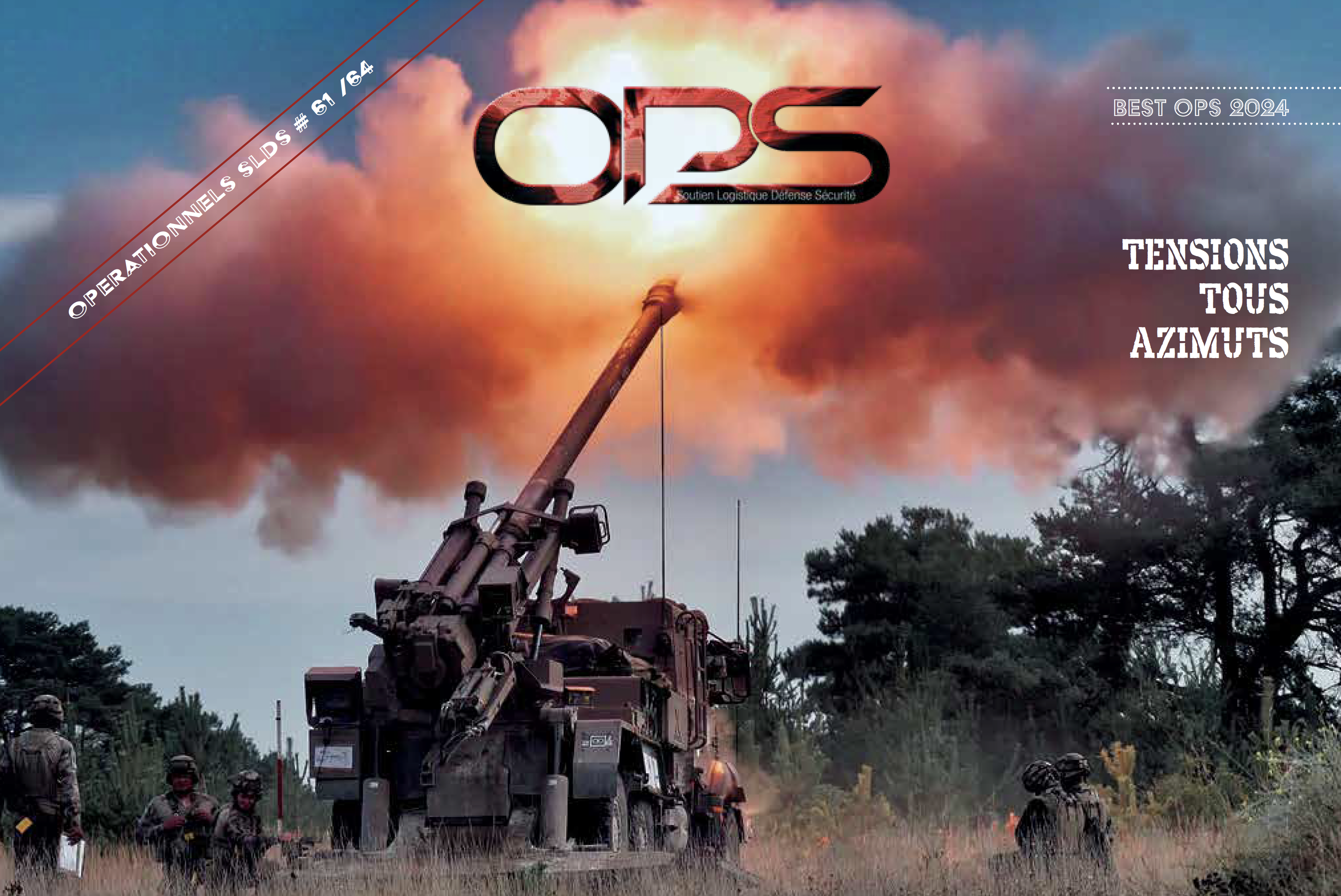
It is also the lead chapter in our latest Australian defence book.


